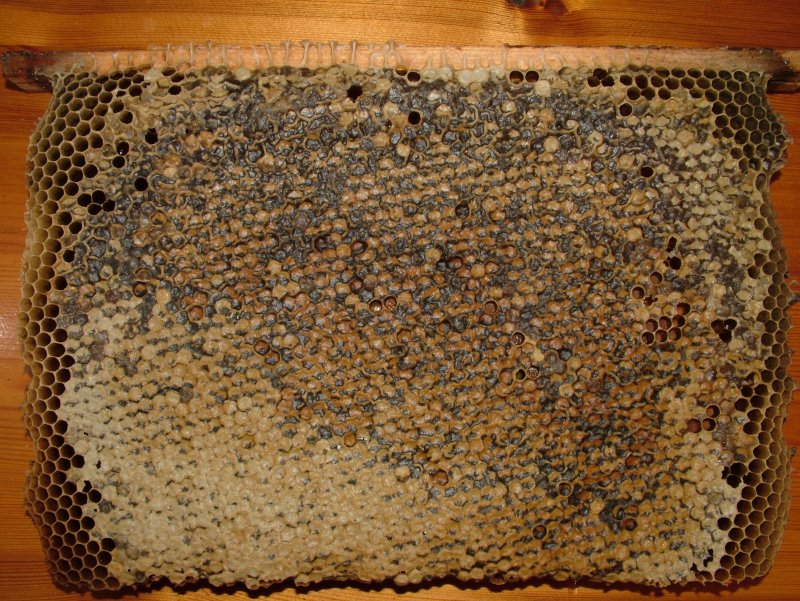
Extracting Honey from Warré Hives
My first Warré box extraction involved mashing the parts of the comb containing honey, draining the honey through a sieve, passing the honey through a nylon mesh and pressing residual honey out of the comb with an improvised press. The whole procedure is illustrated here. This method is extracts a lot of pollen that is hidden under capped honey and therefore produces quite a turbid result.
I have since found that either pressing large chunks of comb or whole combs, or slicing combs with a sharp knife and draining over a sieve produces a much clearer honey. I illustrate the latter method here which extracts at least 80% of the honey with 24 hours draining, and the remaining honey is recovered by pressing.
Warré combs are cut free of the walls of the Warré box and lifted out onto a stainless steel tray. The photo below shows an almost full comb with a few pollen cells. Often there is more pollen hidden under capped honey. Large areas of uncapped pollen and/or empty cells are cut out. If there is any honey in comb that has not had brood -- indicated by it's light colour and location immediately below the top-bars and especially at the sides -- it is taken for packaging as cut comb. The comb is sliced with a serrated stainless steel knife, e.g. a bread knife, making cuts sufficiently close together to cut open every cell.

The sliced comb is placed in a stainless steel strainer over a stainless steel bowl. The strainer used here is from a 60 kg Saf Natura ripener.
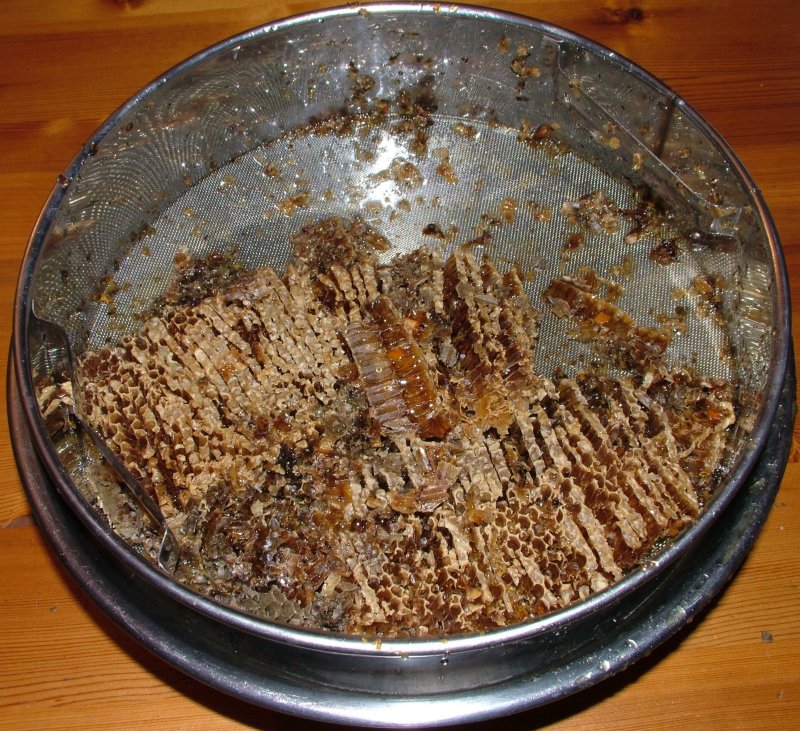
After 24 h draining in a warm room (~21ºC) the comb fragments are placed in a cloth bag and pressed.
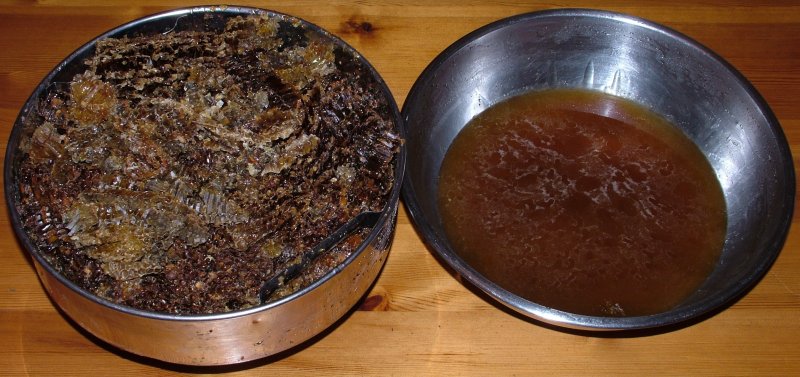
The resulting cake of comb is rigid, indicating that it is freed of most of the residual honey.
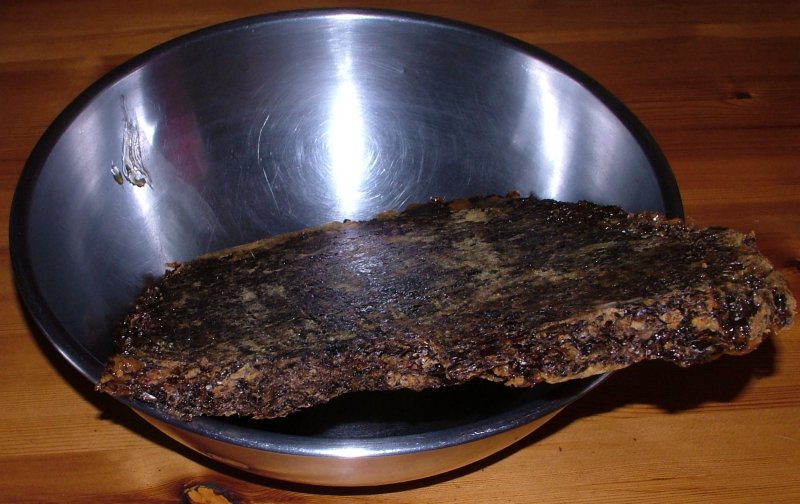
The honey is transferred to a ripener (settling tank) by filtering through a nylon jelly bag to remove particles of wax that passed through the strainer.
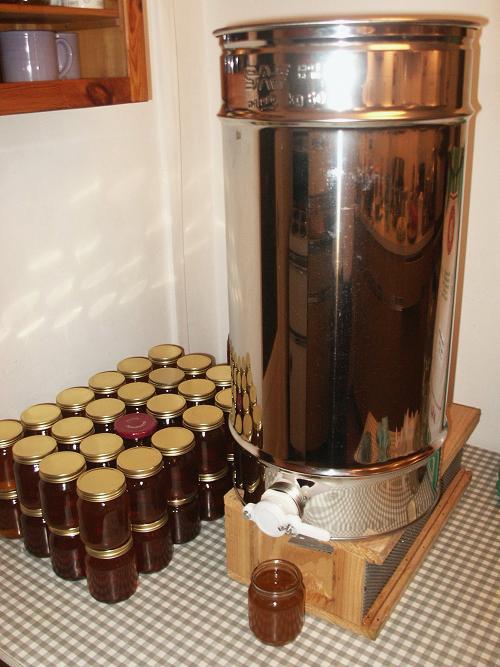
The cutting of comb prior to draining has been mechanised by Gilles Denis in his invention 'La Moulimiel'. The principle is likely to be similar to a familiar kitchen utensil:

A device for chopping honeycomb based on the same principle has been made by Oscar Perone ( http://www.oscarperone.com.ar/images/basemoledor1.png ).
David Heaf's Warré beekeeping index